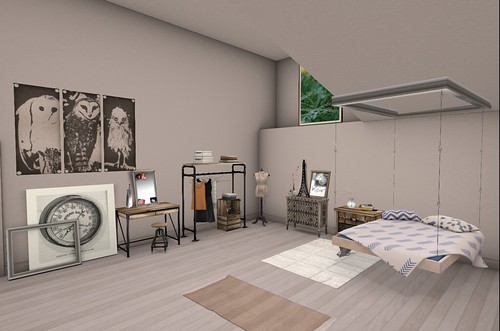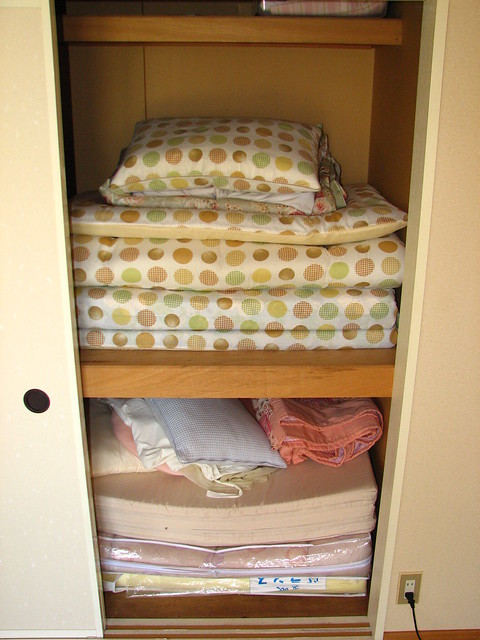 The benefits of doing a daily yoga practice are many. They range from reduced stress to increased strength and flexibility. Many people who practice yoga love it so much that they decide to create a space in their homes that’s dedicated to their yoga practice. However, many don’t have the budget for a full-on, total room renovation.
The benefits of doing a daily yoga practice are many. They range from reduced stress to increased strength and flexibility. Many people who practice yoga love it so much that they decide to create a space in their homes that’s dedicated to their yoga practice. However, many don’t have the budget for a full-on, total room renovation.
Fortunately, this isn’t necessary. Here – it’s possible to create a yoga-themed bedroom with a little ingenuity, the right yoga bedroom decor, and a little paint. If you count yourself among those who’d like to create your own yoga-themed bedroom, these tips will help you get your room in shape, without requiring a contractor to do it.
Reduce Clutter First
Decorating your bedroom in a yoga theme reflects your daily yoga practice in many respects. While it’s true that you need some simple elements like your yoga mat, it’s also true that less is more in many cases.
In light of this, you need to prepare your room by removing some items before you start decorating with your custom yoga bedding and personalized yoga decor. A cluttered yoga space equals a stressful yoga space, according to Yoga Journal. Clutter creates distractions, which you don’t want as you advance in your yoga practice.
If you’re not sure where to start this journey, the Becoming Minimalist website suggests that you start with a few small steps.
Here is a look at a few of them:
- Fill a trash bag and then fill another. Keep doing this in your room until all your extra stuff is gone.
- Get rid of one thing a day.
- Just spend 5 minutes a day doing something. You can put 5 things away or set up a folder system or throw out clothes you don’t wear. Only spend 5 minutes on this.
And one more thing before we move in, remember that extra furniture qualifies as clutter, too. While your yoga bedroom decor will include a bed and possibly chairs, do remember to remove items that will get in the way of your practice.
Be Mindful of Your Color Schemes
Light and natural colors create the most calm in a yoga bedroom. When you’re choosing the paint for your yoga bedroom, gravitate toward off-whites or cream colors.
Or if you feel like you need at least a bit of color, choose colors like greens or blues,
which reflect the natural world and are calming to be around.
Handmade Items
Nothing says custom yoga bedding quite like handmade items. When you’re looking for your yoga bedroom decor, think about bringing in some handmade items to add personal touches to your yoga space. That’s the advice that Well and Good gives to home yoga practitioners.
For example, find a hand-woven rug to put in the center of your bedroom. Choose one made of a natural material like cotton. This becomes your room’s centerpiece.
Decorate the corners with hand-woven or handmade wooden baskets or ottomans. Hang macrame planters from the ceiling or in front of the window.
Make sure that you choose items that don’t have wild colors or patterns. You can have a touch of color or pattern, but avoid pieces that are overwhelmed with them. Minimalism is the key when you’re looking for your yoga bedroom decor.
https://www.flickr.com/photos/wicker-furniture/9025087202/in/photolist-5Ab4RS-XyrtJ1-5Ab4Ns-62Duw4-9Yq4q9-e55nWS-9xyu1b-6zuPBB-eKvVZL-6BnRew-eaHvj3-kit1bX-5aVdLC-5aQVDe-8u3f92-a39M1p-4jNZwN-gZnuoW-65dAbw-ihBZ6s-muUbsg-qomKm8-6BZvUh-rk4H7S-6BZvV5-5A6MNg-AAupUR-zyDzgC-S4FdwD-2Bdn6h-a36dRZ-7DGXy4-a36fnc-rgi73Q-fkR2j2-a36eqt-5aQVut-7zUpQw-62Dtz4-qZm8hF-5Ab4Ed-qtdKXp-FU7nQ7-GjdRox-5aVdfJ-rJTEsM-MFFi52-vzQuqL-dS7jpk-2jbb32
Mood Lighting
The right lighting sets the mood in your yoga room. If your bedroom doesn’t have a dimmer switch light and you’re not in the market for a rewiring, this doesn’t have to stop you from creating soothing lightscapes in the space. Just look for lamps that feature several settings, from bright to low. Place these around the room.
For added effect, select Japanese lantern lamps. These allow you to screen the light. They also fit yoga bedroom decor theme. Place these in the corners of your room, especially around the space where you’ll be doing your yoga practice every day.
Versatile Furniture
You should choose the big furniture pieces in the room like the bed and your chairs with versatility in mind. When it comes to yoga bedroom decor, you really can’t go wrong with a futon. It’s versatile and easy to move.
If you’d like a bed that becomes a centerpiece in the room, then opt for a futon with a frame that folds down into a bed or up into a couch. Many of these frames look chic with the different types of custom yoga bedding that’s on the market. Think a simple tan bed duvet cover on your futon mattress and a black lacquer frame to support it.
If your idea of the perfect yoga bedroom decor includes something a little more minimalist in scope, you can buy pretty bedding to cover the futon mattress at night and store your bedding in a closet during the day. This gives you more floor space to move around on.
Mixed Textures
The word “yoga” means union. It’s the embodiment of opposites. The poses themselves represent both the hard masculine and the soft feminine. You can echo this sentiment by choosing yoga bedroom decor that features opposites in the form of textures.
For example, your futon’s duvet might be made of silk or satin. The throw pillows you put on it could be made of rough linen or cotton. Your floor should be hardwood and smooth ideally, with rough woven mats or rugs all around.
What to Include
Now that you’ve chosen some of the bigger items for your yoga bedroom decor, you’ll want to choose some accessories. These include items like pillows, which aid in your yoga practice, as well as practical items like your yoga mat, blankets, and other items.
The Journey Junkie recommends that you have items such as these in your yoga room.
- A yoga towel
- A meditation pillow
- Yoga blocks
- A yoga mat
- And a yoga sandbag
Other items that will enhance the mood of your yoga bedroom include simple wall art, extra blankets or mats for when you have visitors, a Buddha statue, and candles, and crystals for an alter area.
Final Thoughts on Your Yoga Bedroom
Ideally, your yoga bedroom will become your own personalized yoga retreat. You’ll fill it with your yoga bedroom decor that appeals to your tastes. You’ll enhances this by choosing yoga bedding that flatters the space. And finally, you’ll bring in mood pieces like Japanese lanterns and hanging plant baskets to complete the Zen of the space.
These simple changes allow you to set up a peaceful yoga space, without requiring you to make major renovations in your room. In fact, the best yoga bedrooms are free of clutter and filled with only the items necessary to bring peace to your yoga practice.













